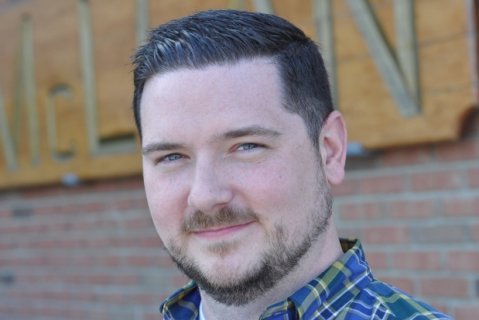Rutgers Graduate Student Stephen Lyman at Helm of Oasis for Merchant Mariners

Stephen Lyman has spent the last 15 years balancing his talent for administration with his wish to be socially useful, sharpening and shaping both with formal study. The director of the Seamens’ Church Institute’s International Seafarers’ Center in Port Newark, New Jersey, is still at it – running the center for merchant mariners while studying for his master’s degree in public administration at the School of Public Affairs and Administration at Rutgers University-Newark.
Lyman is enrolled in the Executive MPA program (EMPA), designed for working executives in nonprofit and government service. The program is highly selective; only 25 people are admitted each year. He expects to graduate in the spring of 2017.
“What I like about the program is that it gets you to focus on the things your organization does well, rather than on its weaknesses,” Lyman says. “Traditionally, in nonprofit management, you’re taught to deal with SWOT – Strengths, Weaknesses, Opportunities and Threats – which is kind of a defensive, passive way to look at things. But at Rutgers, we’re taught to think of SOAR – Strengths, Opportunities, Aspirations and Results – and that’s a much more proactive, positive approach.”
Lyman has devoted his career to what he calls the “earned-revenue side of the nonprofit sector.” For 10 years, he worked for CarePlus New Jersey, a nonprofit group serving mentally ill and disabled people, selling the services those people performed – printer supplies, janitorial services and laundry services. He takes pride in the knowledge that those sales were approximately $40,000 in 2001, when he started, and projected to be $4 million in 2011, when he left to go to work for the Seamen’s Church Institute.
The Seamen’s Church Institute, whose history in the Port of New York and New Jersey goes back to 1834, operates a seafarers’ center in Port Newark and manages a network of chaplains across the United States’ inland river system. It also operates maritime training centers in Houston and Paducah, Kentucky. Lyman started as an assistant operations manager in Newark in 2011, just as he was enrolling at Montclair State University, where he double majored in sociology and business operations, graduating in 2015.
“I like the business side of the nonprofit sector, but I also really enjoy getting to know the people who benefit from the sector,” he says.
He has plenty of opportunities to know the people served by the International Seafarers’ Center, which sits on the only patch of green in Port Newark, a huge concrete apron studded with cranes and carpeted with stacks of empty shipping containers between the New Jersey Turnpike and Newark Bay.
Longshoremen, customs officers and truckers visit the center along with merchant mariners arriving in port from all over the world. In 2014, nearly 18,000 people used SCI’s Center. Seafarers’ ships come from all over the world, and they don’t stay long. A ship can be stripped of her cargo containers and reloaded in as little as six hours. The crews often have work to do aboard while their ships are in port, so time ashore is precious, sometimes nonexistent.
Volunteers and chaplains from the International Seafarers’ Center visit ships and provide whatever services the seafarers need – sometimes, just the opportunity to talk to someone who isn’t a mariner; sometimes, an emergency call to a seafarer’s consulate. The center also brings seafarers to the center, where they can phone home and use the Internet to talk to their families, or transports them to a mall in nearby Elizabeth. The International Seafarers’ Center transported 16,242 seafarers to the mall in vans in 2014.
“I’m continually impressed by how vast the maritime industry is,” Lyman says. “All these industries – manufacturing, trucking, shipping – coming together to put a shirt on a shelf, to get a product to an end-user. Before I came here, I’d just go to the store and buy a shirt, and not think about how many people it took to get that shirt on my back. And the people who make the system run are just about invisible.”
